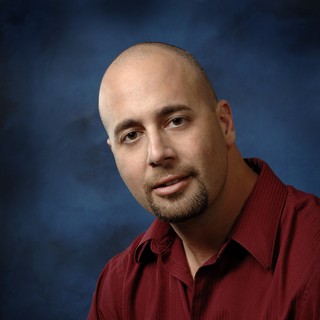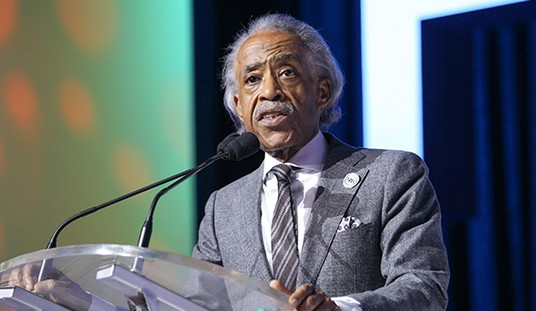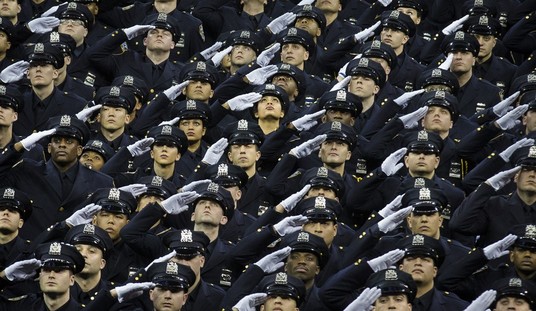Your English teacher drilled it into your head when your face was filled with braces and pimples: “Use active voice! Not passive voice! Active voice, good. Passive voice, bad.”
Quick refresher: Passive voice is often associated with verbs such as is, was, and has been, whereas active voice uses an action-specific verb: run, jump, speak (among countless others). Active focuses on the subject performing an action; passive focuses on the subject receiving the action. “Chocolate milk was being drunk by the boy” is passive voice; “The boy drank chocolate milk” is active.
So forget about anything lofty, like being the next Hemingway: If you wanna be an effective writer on ANY level, for the love of all that’s good and holy, forsake passive voice and embrace active!
Behind the scenes at PJ Media Global Headquarters, our cruel editorial overlords crack the whip, reminding us lowly writers at least once a month: “Our audience deserves the best-written, most-insightful conservative commentary. Don’t bury a great idea in a sea of passive voice! Active, active, active!”
And, for the most part, they’re absolutely right. Most of the time, active voice comes across punchier.
It enhances the storytelling.
Early in my PR career, I did a lot of copywriting: A client would have 50 words (or whatever) to promote his wares in a newspaper or magazine, so it was critical to economize each word. Wasting limited “real estate” on passive verbs felt especially blasphemous, so we leapt with gusto in the opposite direction, Michael Bay-ing the sales copy, overloading it with action words and cool-sounding adjectives.
In all honesty, it probably distracted the intended audience. Sometimes, less is more.
Because lately, I’ve noticed that comedians use a LOT of passive voice. That’s really interesting, because most of the top-tier standups are verbal sharpshooters, constantly revising and refining their routines — shaving away the unimportant parts, so the funniest moments shine the brightest.
When you see ‘em perform on Netflix comedy specials, you’re watching the end results of hundreds of hours beta-testing verbiage, structure, word-choice, and tone. For months at a time, they’ve performed this routine over and over again, tweaking and editing at every turn, cutting the fat and retaining the red meat.
I’ve worked with some athletes and a handful of celebrity chefs, but by a pretty wide margin, most of the celebs I’ve helped were either singers or comedians. The singers were kinda-sorta hit-or-miss: Sometimes they were smart and interesting; other times they were vapid and boring. But by an overwhelming margin, the standup comedians were almost always loads of fun. They’re bright, observant, and deviously sly. (Good folks.)
I think that’s because comedians write their own material, whereas singers aren’t always burdened with such… trivialities: They’re purely performers.
Being responsible for your own material requires a different skill set. You need more brains.
So how come, in Shane Gillis’ 48-minute (very funny) standup special, he used the oft-passive word “was” 120+ times? Or years earlier, Richard Pryor used “was” 75+ times?
Gillis is one of the top comics of today; Pryor an all-time great. Surely, if action voice helped better punctuate a punchline or better emote a feeling, they would’ve made the necessary edits.
Maybe the opposite is true: Maybe passive voice is underrated!
Or maybe it’s more about rhythm, cadence, and subverting expectations. Maybe, when a comedian uses passive voice a few times in a row, it’s more emphatic when he switches to active.
Countless punchlines depend on zigging when the audience anticipates a zag.
Or maybe there’s an undeniable clarity to passive voice that supersedes the rhetorical flourish of active. Maybe communicators of all stripes and persuasions would be wise to learn from Pryor and Gillis, and ought to focus more on the (word) salad and less on the (window) dressing.
Or maybe writing is a form of art, and there are no absolutes in art. The rules are there for a reason, but they aren’t unbreakable laws.
More like guiding principles.
Passive or active, it’s the writer’s responsibility to communicate his or her ideas as effectively as possible. That includes the quality of prose, but the idea itself is paramount. If you’re asking a reader to read it, you owe them your best work — top to bottom, basement to ceiling, carpet to curtains.
The secret, then, isn’t one thing. It’s everything. Active, passive, and anything in between.
Sometimes, the stability and clarity of passive voice serves as an anchor, so the writer can tie together a cacophony of colorful adjectives. There’s a time and place for everything under the sun.
Then again, one of the key differences between performative comedy and political writing is the intent of the author: In standup, it’s critical for the audience to enjoy every step in the journey. You don’t wanna go too many minutes without a laugh — or your audience will walk.
The journey itself is the measuring stick.
But in political writing, it’s much more about the takeaway at the end: the quality of your ideas and/or the persuasiveness of the arguments that you’ve just presented to the audience. A fun, entertaining political essay without anything important to say at the end leaves you unfulfilled.
It’s empty calories.
Which is why it’s so interesting that the standup comedy specials that become legendary aren’t always the ones with the most belly laughs. Instead, they’re the ones that made us think about something big.
Somehow or someway, before the show ended, they became a little like a political essay.
And the most memorable political columns are the ones that read like a well-honed comedy routine: punchy one-liners, snarky rejoinders, and plenty of witticisms sprinkled throughout. The telltale sign of a worldclass op-ed is when you’re so excited to share the author’s wording, you forward it verbatim to everyone you know.
Comedy writing and political writing could learn much from each other. Or, perhaps, we already have.










